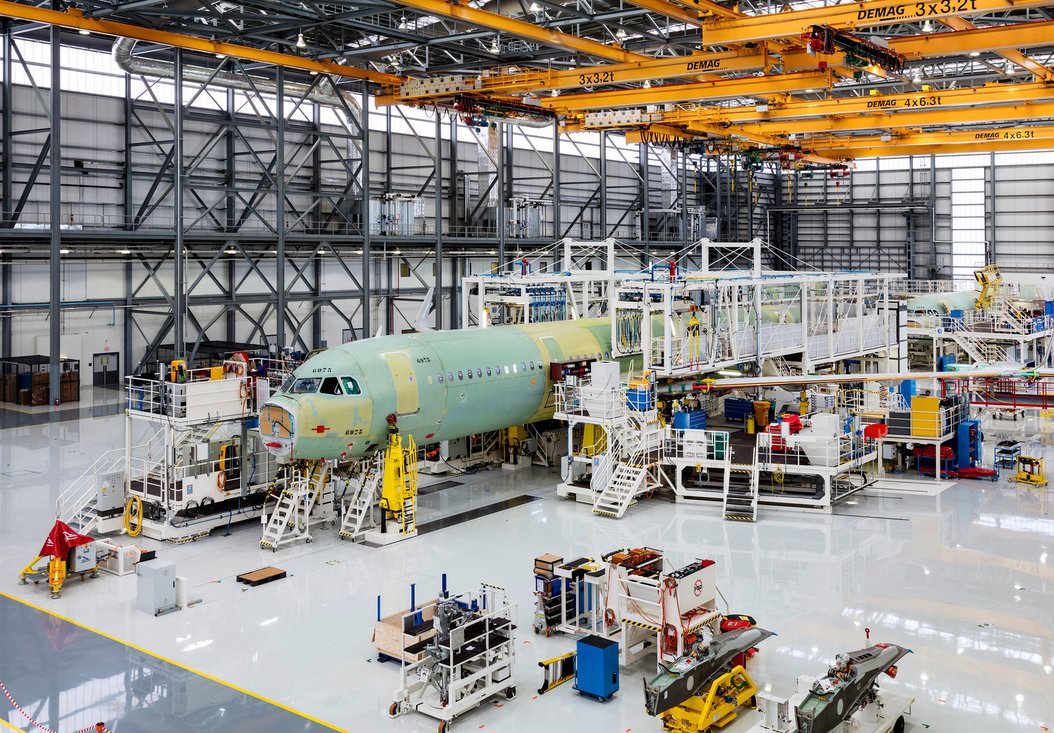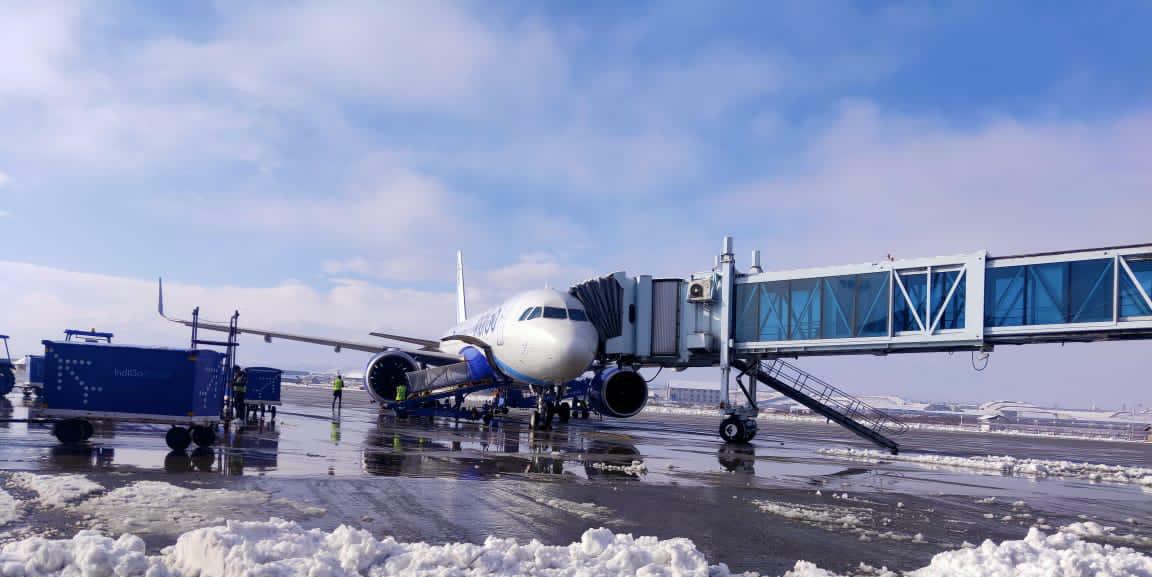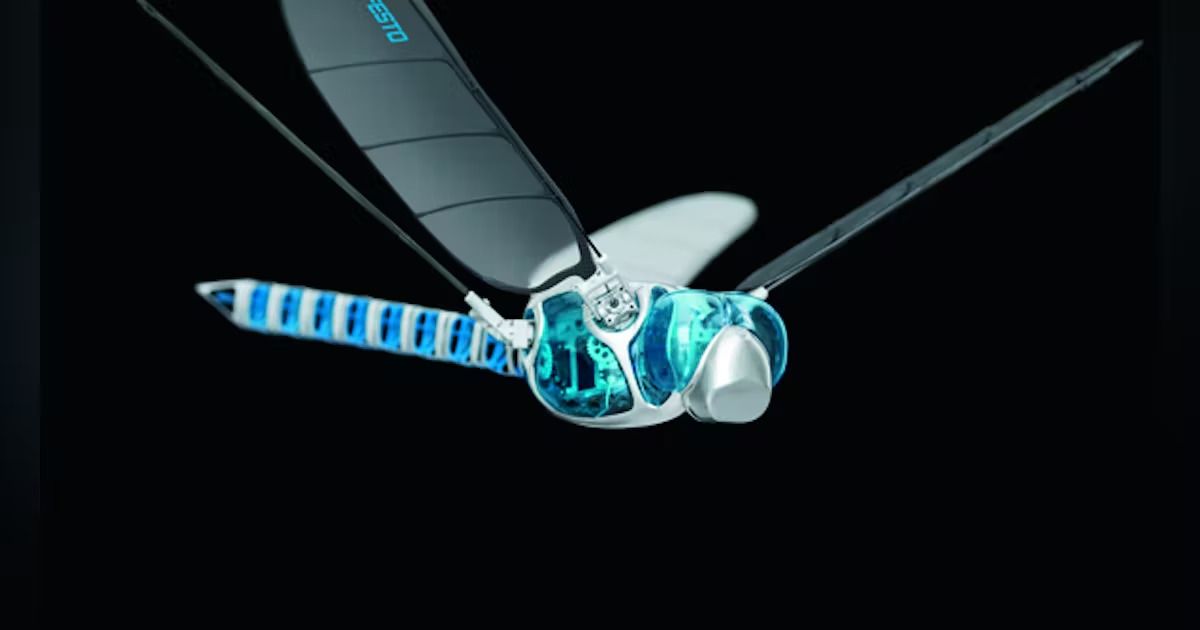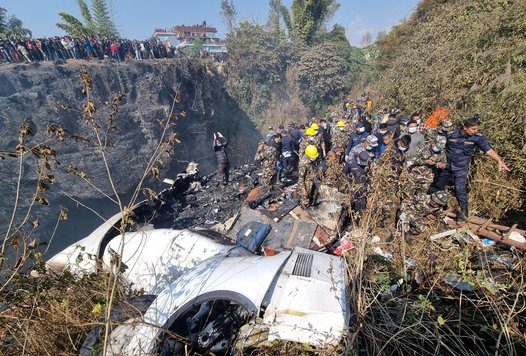Government encourages Airbus and Boeing to set up final assembly lines in India
Radhika Bansal
16 Jan 2023

The Modi government has sounded out aerospace majors Airbus and Boeing to set up final assembly lines in the country as these two are likely to get orders for nearly 2,000 aircraft from Indian airlines over the next decade or so.
In contemporary times, IndiGo was so far the only Indian carrier placing mega aircraft deals and inducting those planes — with its last 2019 firm order for 300 A320neo family aircraft taking the budget carrier’s total number of A320 family aircraft orders to 730.
In the next few weeks, the Tata Group is going to place a big order for hundreds of narrow and wide-body Boeing and Airbus for its in-the-works new Air India and low-cost Air India Express.
The government encourages Airbus and Boeing to set up final assembly lines in India
India is going to be among the top aviation markets globally thanks to a growing aspirational middle class for whom air travel is no longer a luxury but a necessity. International travellers have been filling up neighbouring hubs of foreign airlines for decades.
The acquisition of Air India and Air India Express by the Tatas and the pre-existing eminent position of IndiGo means India will have its mega carriers that will place mega orders. Then there are several smaller airlines too.
“We cannot be happy with the aircraft makers just buying components from India, whether with or without offset requirements. It is time Airbus, Boeing and engine majors set up final assembly lines here,” people in the know told TOI. Comments were sought on the issue from both the aircraft majors.
Sources in these companies say they are being increasingly nudged in that direction by the government. Last month, the commerce department sounded an alarm at the surge in the import of aircraft. The import of unladen aircraft (not loaded with goods or passengers) weighing 15,000 kg, valued at over USD 200 million, had increased 56.5% in April-September 2022 over the same period last year.
Imports of certain turbo jets had increased by 34% and helicopters of an unladen weight of more than 2,000 kg jumped by 42%, the commerce department had pointed out. Following this, the aviation ministry sought steps that could be taken to develop a strategy to bring down the trade deficit.
To be sure, having a final assembly line (FAL) in India means having the entire supply chain ecosystem in the vicinity— right from aircraft body, wings, assembled engines, seats and everything imaginable.
For instance, a leading engine major had last year replied that “we need to be close to aircraft FAL” in Toulouse and the US when asked if it planned to have a FAL in India. “The process will take some years but it must be started now to have the same in place in the next 3-4 years. Otherwise, it will remain a chicken-and-egg story,” said people in the know.
The government is of the view that now is the time to take the next step and make commercial aircraft in India too. Airbus has four A320 family assembly facilities around the world — Toulouse (France); Hamburg (Germany); Tianjin (China) and Mobile (US).
India’s IndiGo is the world’s largest customer of the A321neo family of aircraft.
The China FAL commenced operations in 2008 and last November it commissioned its first A321, something Airbus had described as deepening “collaboration with China’s aviation industry and demonstrates Airbus’ commitment to enhancing its long-term strategic partnership with China.” India’s IndiGo is the world’s largest customer of the A321neo family of aircraft.
Boeing has all its FALs in the US. It opened a completion centre in China where aircraft assembled in the US are flown to. Fitting of seats and aircraft painting is done in China, hence the name. People in the know say the critical things while deciding to set up a FAL in a country are the size of its market.
“Infrastructure including reliable power, hangars and availability of skilled manpower certified by Federal Aviation Administration (FAA) as every person touching an aircraft needs to be certified. An aircraft has millions of parts so supply chain processes and raw material availability need to be in place,” they say.
Last October, Tatas and Airbus announced they will jointly make the C-295 transport aircraft for the Indian Air Force in Gujarat.
Finally, aircraft manufacturers worry if customer orders do not specifically seek guarantees that planes not be made in some places. For instance, when Boeing opened its second B787 FAL and delivery facility in South Carolina’s Charleston about 15 years ago, some airlines specifically said they wanted their Dreamliners to be from the Seattle FAL.
Some years later when airlines realised that the B787s from both the FALs are the same quality-wise, then they dropped these pre-conditions, say people in the know. Last October, Tatas and Airbus announced they will jointly make the C-295 transport aircraft for the Indian Air Force in Gujarat.
The defence ministry had at that time described this as “the first project of its kind in which a military aircraft will be manufactured in India by a private company.” Till now, only state-owned Hindustan Aeronautics makes aircraft for the armed forces.
(With Inputs from The Times of India)
Read next
A 72-seat passenger ATR-72 aircraft belonging to Yeti Airlines tragically crashed upon landing at Pokhara International Airport in Nepal's Kaski district on Sunday, January 15. The aircraft was 15 years old. It was Nepal's worst crash in nearly five years.
At least 67 people are confirmed dead after a plane carrying 72 people crashed in Nepal on Sunday, police said. "Thirty-one (bodies) have been taken to hospitals," police official AK Chhetri told AFP, adding that 36 other bodies were found in the gorge where the aircraft crashed.
There were 5 Indians apart from 4 Russians, 1 Irish and 2 South Korean nationals among the passengers. The Indian nationals have been identified as Abhisekh Kushwaha, Bishal Sharma, Anil Kumar Rajbhar, Sonu Jaiswal and Sanjaya Jaiswal, a Yeti Airlines official said.
Yeti Airlines ATR-72 crashes in Nepal's Pokhara; all the lives lost
According to the Civil Aviation Authority of Nepal (CAAN), Yeti Airlines' 9N-ANC ATR-72 aircraft took off from Kathmandu's Tribhuvan International Airport at 10.33 am and crashed at the Pokhara airport at around 11 am. Emergency rescue operations are currently being conducted at the airport. A total of 72 people - 68 passengers and 4 crew members - were on board the ill-fated flight, as confirmed by a spokesperson for Yeti Airlines.
The Yeti Airlines flight 9N-ANC ATR-72 was on its third sortie since Sunday morning. It first flew from Kathmandu to Pokhara and back to Kathmandu earlier in the day. The Yeti Airlines aircraft took off from Kathmandu's Tribhuvan International Airport at 10:33 am. While landing at the Pokhara airport, the plane crashed on the bank of the Seti River between the old airport and the new airport.
Flight tracking website FlightRadar24 said the Yeti Airlines aircraft was 15 years old and equipped with an old transponder with unreliable data. Yeti Airlines has a fleet of six ATR72-500 planes, according to its website. Yeti describes itself on its website as a leading domestic carrier of Nepal.
Images and videos of the crash posted on social media showed smoke billowing from the site.
Nepalese Prime Minister Pushpa Kamal Dahal called an emergency cabinet meeting following the crash and directed effective rescue operations. The Nepal government has also formed a five-member commission of inquiry to probe the plane crash. The Nepal government has also formed a five-member commission of inquiry to probe the plane crash.
Images and videos of the crash posted on social media showed smoke billowing from the site. As per reports, the airport was closed temporarily owing to the incident. Pokhara, in central Nepal, is a lakeside tourist mecca below the Annapurna mountain range.
The passenger plane reportedly crashed just ten seconds before landing. According to the Air Traffic Control (ATC) staff, the runway of Pokhara is built in the east-west direction. Initially, the pilot asked for a landing in the east and permission was granted. However, later on, the pilot asked for permission to land in the west direction and was given permission again. But the plane crashed ten seconds before landing.
The new airport, Nepal's third international airport, built with Chinese assistance, was inaugurated only days ago, on January 1, 2023.
It was a clear day in the Pokhara valley and weather conditions were not all adverse. The crashed aircraft was an ATR-72, an aviation workhorse in the mountainous region. The cause of the crash will only be known after data from the blackbox is analysed. The new airport, Nepal's third international airport, built with Chinese assistance, was inaugurated only days ago, on January 1, 2023. Rescue operations are underway and the airport has been closed for the time being.
The weather was clear, said Jagannath Niroula, Nepal's Civil Aviation Authority spokesman. "Thirty bodies have been recovered and sent to hospital," Niroula said, as reported by Reuters. "Another 14 bodies are still lying at the crash site and authorities are bringing in a crane to move them," he said.
The Himalayan country of Nepal, home to eight of the world’s 14 highest mountains, including Everest, has a record of air accidents. Its weather can change suddenly and airstrips are typically sited in difficult-to-reach mountainous areas.
ALSO READ - Nepal’s Tara Air crash – 14 bodies recovered, the reason for the crash unknown
Last May, a Tara Air flight carrying 22 people crashed into a Himalayan mountain at an altitude of about 14,500 feet.
Last May, a Tara Air flight carrying 22 people crashed into a Himalayan mountain at an altitude of about 14,500 feet. That was the country’s 19th plane crash in 10 years and its 10th fatal one during the same period, according to the Aviation Safety Network database.
In 2016, all 23 people aboard were killed when a plane of the same airline flying the same route crashed after takeoff. In March 2018, a US-Bangla Air crash occurred at the Tribhuvan International Airport, killing 51 people on board.
A Sita Air flight crashed in September 2012 while making an emergency landing at the Tribhuvan International Airport, killing 19 people. A plane flying from Pokhara to Jomsom crashed near Jomsom airport on May 14, 2012, killing 15 people.
Nepal's air industry has boomed in recent years, carrying goods and people between hard-to-reach areas and foreign trekkers and climbers. But it has been plagued by poor safety due to insufficient training and maintenance. The European Union has banned all Nepali carriers from its airspace over safety concerns since 2013.
Read next
The new L band digital aeronautical communications system (LDACS), a revolutionary air traffic control (ATC) communications system that greatly improves bandwidth and enables contemporary IP-based communications, has been developed by Rohde & Schwarz in collaboration with research partners. In order to become the next global standard, it is about to supersede the current VHF digital link (VDL) mode 2 in civil aviation.
Compared to VDL mode 2, LDACS provides data throughput that is up to 200 times quicker. Particular frequencies in the L band designated for flight communications are used by LDACS. In order to minimize out-of-band emissions and ensure trouble-free operation with other aircraft equipment operating in that band, it employs interference suppression algorithms.
Representative | Collins Aerospace
" Modern aviation demands the secure exchange of data. LDACS reliably enables high data throughput that is secured with encryption. It can support a wide variety of new applications, such as the data connections airlines need for flight crews to efficiently plan fleet operations "- Thomas Bögl, Director of Technology and Studies at Rohde & Schwarz, explains
The extremely simple road to a market launch is another advantage of LDACS. New environmentally friendly navigation techniques will also benefit from dependable and secure data transfer through LDACS. The idea is to choose air routes with exact three-dimensional coordinates and strict time constraints. Aircraft can be dynamically routed around airports using the 4D trajectory idea to avoid noise protection zones.
A program for aviation research called LuFo has been developed by the German Federal Ministry for Economic Affairs and Climate Action for LDACS. The programmer is Rohde & Schwarz. To advance LDACS technology, more project partners like the German Aerospace Center (DLR) are working together. The International Civil Aviation Organization (ICAO) and the working groups in the program are working together to develop and execute flight acceptability standards.
A technological foundation has been laid as part of the recently established LuFo project "Pave the Way to Digital Aeronautical Communications" (PaWaDACs), enabling the product development of LDACS ground equipment and LDACS aerial equipment beginning in 2025. The equipment is anticipated to go on sale in 2028. Rohde & Schwarz will have a competitive advantage over other LDACS suppliers due to its early involvement in the LuFo project.
Rohde & Schwarz
Beginning in early 2022, the PaWaDACs project has been in progress. It focuses on establishing a realistic test installation and miniaturizing equipment demonstrators at two locations run by the German air navigation service provider (DFS). Once finished, the essential technological foundation for future LDACS systems will be established. New civil aviation product development will have a strong foundation.
SOURCE: rohde-schwarz
COVER: European Defence Agency
Read next
European planemaker Airbus said it had withdrawn from a U.S. government-named panel reviewing Boeing’s safety processes and how they influence Boeing safety culture after two fatal 737 MAX crashes in recent years killed 346 people.
The Federal Aviation Administration's (FAA) panel named last week includes MIT lecturer and aerospace engineer Javier de Luis whose sister was killed in a MAX crash, as well as experts from NASA, the FAA, labour unions, Southwest Airlines, American Airlines, United Airlines, GE Aviation and FedEx Express.
Among those named was James Tidball, head of the certification for Airbus Americas. Airbus said in a statement to Reuters it appreciated the FAA's recognition of Tidball's impartiality concerning safety but given "the panel’s focus on a particular (Original Equipment Manufacturer, Tidball)... has decided to recuse himself from this working group."
Airbus leaves the US FAA panel reviewing Boeing safety culture
The panel, which Congress required under a 2020 law to reform how the FAA certifies new airplanes, has nine months to complete its review and issue findings and recommendations. Congress directed the agency to appoint a panel by early 2021, but the FAA missed that deadline.
A 2020 U.S. House report said the MAX crashes in 2018 and 2019 "were the horrific culmination of a series of faulty technical assumptions by Boeing's engineers, a lack of transparency on the part of Boeing's management, and grossly insufficient oversight by the FAA."
Boeing last week declined to comment on the panel, but previously emphasized it has significantly reformed its safety culture after the MAX crashes cost it more than USD 20 billion.
The FAA continues to subject Boeing to enhanced oversight, inspecting all new Boeing 737 MAXs and 787s before they can be delivered.
Last month, Congress voted to lift a December 27 deadline imposing a new safety standard for modern cockpit alerts for two new versions of the 737 MAX aircraft that could have put the future of those new models at risk.
ALSO READ - Boeing B737 MAX fleet suspension is one of the single most extensive aviation insurance claims in history
In May, the FAA opted to renew Boeing's Organization Designation Authorization (ODA) program for three years rather than the five years Boeing sought. The FAA continues to subject Boeing to enhanced oversight, inspecting all new Boeing 737 MAXs and 787s before they can be delivered.
ALSO READ - Airbus abandons its 2022 commercial aircraft delivery goal
(With Inputs from Reuters)
Read next
Air traffic in Kashmir affected as several flights cancelled due to snowfall
Radhika Bansal
14 Jan 2023

Air traffic to and fro Kashmir was affected on Friday as several flights were cancelled due to snowfall across the valley, officials said here. The fresh snowfall started early in morning and continued till the last reports came in.
While the higher reaches of Jammu and Kashmir experienced moderate to heavy snowfall, the areas in the plains received light to moderate snowfall.
"The flight operations at Srinagar airport have been suspended till further notice due to continuous snowfall and low visibility," the Director, of Airport Authority of India (AAI), Srinagar Airport, Kuldeep Singh, told PTI. He said the flight operations took place in the morning but had to be suspended after 10 am due to low visibility and snowfall.
Air traffic in Kashmir affected as several flights cancelled due to snowfall
Most of the airlines, including, Air India, AirAsia, IndiGo, SpiceJet and Vistara, have cancelled all their remaining flights for the day due to the bad weather, Singh said. Other airlines also have cancelled several of their flights.
All flights to and from Srinagar were initially suspended and later cancelled after 10 am due to continuous snowfall and poor visibility, an airport official said. The air traffic will resume after the weather improves. The passengers booked on the cancelled flights would be accommodated by the respective airlines in the next available flight at no extra cost, airport authorities said.
The inclement weather has also resulted in the closure of the Srinagar-Jammu national highway - the only all-weather road connecting Kashmir valley with the rest of the country. The highway was closed for traffic due to landslides at Mehar, and slippery conditions of the road. The officials said road clearance operations were going on, but continuous snowfall and rain were making the job difficult.
ALSO READ - Jammu & Kashmir airports to get a makeover worth INR 2,361 crore
Read next
Could a humble dragonfly pave the way for a safe and autonomous flight?
Prashant-prabhakar
14 Jan 2023

Continuous progress is the goal when it comes to safety. Airbus is always looking for new inspiration to develop proactive solutions that can raise performance and safety.
Representative | Airbus
And what better place to get inspiration from than the magnificent natural world? Airbus's "sharklet" wing-tip design, which decreases drag, and the fello'fly demonstrator, which imitates the formation flying of snow geese for better performance, are just a few of the innovative solutions it has developed as a result of biologically inspired engineering, also known as "biomimicry".
Airbus
The recent biomimicry demonstration from Airbus, called DragonFly, was motivated by the common, humble "dragonfly."
A dragonfly's exceptional vision, 360-degree vision, and ability to recognize landmarks enable it to clearly determine the limits of its territory. Similar to how the systems the company is researching and developing review and recognize landscape elements to help the aircraft "see" and safely maneuver in its surroundings.
Especially in the context of emergency operations, these advances may add another level of safety to aircraft. In the odd event that a crew loses control of the plane, DragonFly can reroute the flight to the closest suitable airfield and help with a secure landing.
Decoding "DragonFly"
When it comes to derisking emergency operations, DragonFly could be a game-changer. Its three main areas of focus each support automated yet thoughtful decision-making by combining data collected during flight with a massive corpus of flight information.
Representative | Royal Aeronautical Society
In order to help assure safe flight and landing, DragonFly provides a solution. The onboard system recognizes a problem and automatically chooses the best airport to guide the aircraft toward if the crew is unable to manage it.
Of course, flight routes and outside variables are complicated and dynamic. A dragonfly explores its surroundings before adjusting its course. Similar to this, the DragonFly prototype makes its landing decisions by taking into account the environment, including flight lanes, topography, and weather. However, in contrast to a typical dragonfly, the DragonFly additionally gains from a continuous line of communication between the aircraft and both Air Traffic Control and the airline's Operations Control Center to guarantee a secure and well-coordinated approach.
L'Usine Nouvelle | Representative
In the same way that dragonflies can recognise landmarks that help them to define boundaries, our demonstrator is equipped with cutting-edge sensing technology and software, capable of managing in-flight and landing operations. The DragonFly demonstrator has been made possible through cooperation within the Airbus engineering community and with our trusted external partners, and we look forward to the insights that this final stage of testing will deliver- Isabelle Lacaze, Head of DragonFly demonstrator, Airbus UpNext
Possible safe and automated landing at any airport in the world
Airbus has developed a system that combines sensors, computer vision algorithms, and reliable navigation calculations to greatly simplify landing in poor visibility or challenging weather circumstances because a dragonfly's eyesight functions much more swiftly than a human's.
The technologies were able to help pilots throughout the flight test campaign when handling a simulated disabled crew member event, as well as during landing and taxiing operations. The aircraft was able to construct a new flight trajectory plan and interact with both Air Traffic Control (ATC) and the airline operations control center while taking into account external factors like flight zones, topography, and weather conditions.
These advancements open the door for an automatic landing (if required) or can be tailored to the pilot's flying abilities to relieve them of extra steps in an emergency or critical circumstance.
In the future, DragonFly's advancements may make it possible for the plane to land at any airport in the world, regardless of whether the airport has the ground equipment necessary for automatic landing.
The crew of the DragonFly demonstration can manage taxi guidance and instructions, including navigation and surveillance, with the use of pilot assistance technology, giving them up to concentrate on other crucial responsibilities.
Airbus
Airbus has started testing new, on-ground, and in-flight, pilot assistance technologies on an A350-1000 test aircraft.
Moving forward
The final three months of DragonFly's testing phase have already begun. Through these test flights, Airbus UpNext will be able to upgrade or validate the technology in order to incorporate advancements into the next programs.
Along with these features, Airbus UpNext is starting a project to develop the newest computer vision-based algorithms for improved landing and taxi assistance.
https://www.youtube.com/watch?v=nubL1I7sxEE
Cooperation between Airbus divisions and outside partners, such as Cobham, Collins Aerospace, Honeywell, Onera, and Thales, allowed for the execution of these tests. The French Civil Aviation Authority (DGAC) provided some funding for DragonFly as a part of the French Stimulus plan, which is a component of the European Plan, Next Generation EU, and the France 2030 plan.
SOURCE: Airbus
COVER: Machine Design




Comment